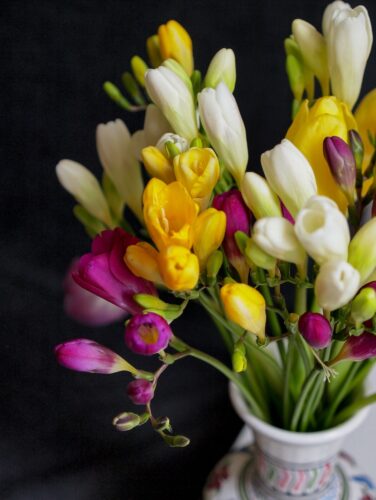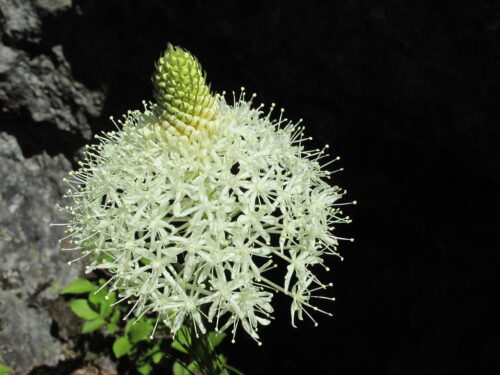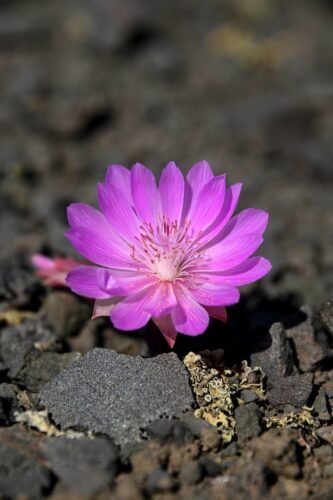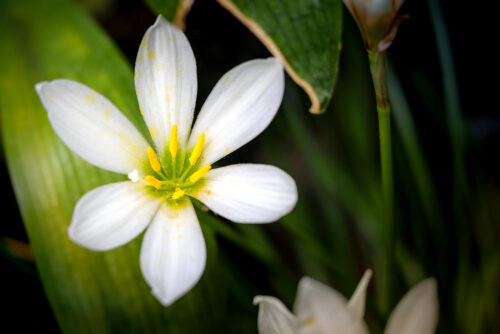There are many flowers that represent a New Beginnings, such as the daffodil, daisies, calla lily, lotus flower, roses, cherry blossoms, iris flower, peonies, sunflowers, freesia, orchids, tulips, camellia, gladiolus, xerophyllum, lewisia, and zephyranthes.
In the arena of flowers, symbolism plays a vast role. Different plant life are associated with numerous meanings and emotions. One of the maximum common and delightful symbolic representations within the realm of flora is that of recent beginnings. Whether it is the begin of a new chapter in lifestyles, a sparkling outlook, or the promise of a brighter future, these plants convey the essence of a brand new starting. In this exploration of flowers that symbolize new beginnings, we are able to delve into the charming international of every bloom, unveiling their mysteries and tales.
| Flower Name | Symbolism |
|---|---|
| Daffodil | Renewal, new beginnings, spring, happiness |
| Daisies | Innocence, purity, new beginnings |
| Calla Lily | Purity, rebirth, resurrection, new beginnings |
| Lotus | Enlightenment, purity, spiritual awakening |
| Roses | Love, beauty, new beginnings |
| Cherry Blossoms | Transience of life, new beginnings, beauty |
| Iris Flower | Hope, wisdom, courage, new beginnings |
| Peonies | Prosperity, good fortune, new beginnings |
| Sunflowers | Adoration, loyalty, happiness, new beginnings |
| Freesia | Trust, friendship, new beginnings |
| Orchids | Elegance, luxury, new beginnings |
| Tulips | Fresh starts, rebirth, new beginnings |
| Camellia | Gratitude, perfection, new beginnings |
| Gladiolus | Strength, integrity, new beginnings |
| Hyacinth | Rebirth, forgiveness, new beginnings |
| Xerophyllum | Transformation, new beginnings |
| Lewisia | Calmness, tranquility, new beginnings |
| Zephyranthes | Renewal, optimism, new beginnings |
Here are 18 Flowers That Symbolize New Beginnings:
1. Daffodil
Daffodils, with their vibrant yellow petals and delicate trumpet-shaped centers, are heralds of spring and symbolize new beginnings. These cheerful flowers are often the first to bloom after a long winter, bringing hope and renewal to the world.
Interesting Facts:
- Daffodils belong to the Narcissus genus, which includes numerous species and cultivars.
- The word “daffodil” is derived from “asphodel,” a lily-like flower in Greek mythology associated with the afterlife.
- Daffodils are the national flower of Wales and are traditionally worn on St. David’s Day, celebrated on March 1st.
Mystery Story: Legend has it that daffodils first bloomed in the Garden of Eden, and they symbolize the return of spring and rebirth. In some cultures, daffodils are believed to bring good luck and ward off evil spirits. There is also a mysterious tale of a hidden treasure buried beneath a field of daffodils, enticing adventurers to seek out the riches that await beneath the golden blooms.
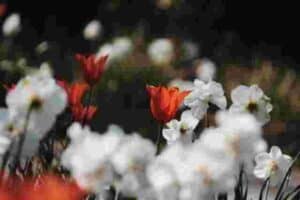
2. Daisies

Daisies, with their simplicity and purity, are often associated with new beginnings and innocence. These charming flowers are known for their white petals and sunny yellow centers, which radiate positivity.
Interesting Facts:
- Daisies belong to the Asteraceae family and are related to sunflowers and asters.
- The name “daisy” is believed to come from the Old English word “daes eage,” meaning “day’s eye,” because the flowers open during the day and close at night.
- Daisies are often used in herbal medicine for their mild healing properties.
Mystery Story: In folklore, daisies are said to represent the spirits of children who have passed away prematurely. It is believed that these spirits find solace in daisies and use them as a gateway to return to the world of the living, bringing with them messages of hope and new beginnings.
3. Calla Lily

The elegant Calla Lily is a symbol of rebirth and resurrection, making it a popular choice for weddings and other significant life events. Its graceful, trumpet-shaped flower is often associated with purity and new beginnings.
Interesting Facts:
- Calla Lilies belong to the Zantedeschia genus and are native to southern Africa.
- The name “Calla” comes from the Greek word for “beautiful.”
- In ancient Rome, Calla Lilies were associated with the goddess Venus and were used in various rituals.
Mystery Story: One mysterious legend tells of a magical Calla Lily that possesses the power to grant new beginnings to anyone who touches its petals. In a remote village, it is said that a hidden garden of these enchanted lilies can only be found by those who truly seek a fresh start. Many have embarked on quests to find this garden and start anew, but its location remains a well-guarded secret.
Calla lily Bulbs(my Favorite) – Shop Now
4. Lotus

The Lotus flower has deep spiritual significance in many cultures and symbolizes purity, enlightenment, and the emergence of new beginnings from the depths of adversity. It is often associated with the concept of rebirth.
Interesting Facts:
- Lotus flowers belong to the Nelumbo genus and are native to Asia and Australia.
- In Hinduism and Buddhism, the Lotus is a sacred flower that represents divine beauty and enlightenment.
- Lotus seeds can remain dormant for centuries and still sprout when conditions are right.
Mystery Story: Ancient legends speak of a mystical pond hidden deep within a secluded forest, where a single, radiant Lotus blooms at the break of dawn. It is said that anyone who gazes upon this Lotus will be granted a fresh start in life, free from the burdens of the past. Many seekers have ventured into the forest in search of this Lotus, but few have returned to tell their tales, leaving the existence of the sacred pond shrouded in mystery.
Know about Lotus plant Care.
5. Roses

Roses are perhaps the most iconic of all flowers and are associated with love and passion. However, they also symbolize new beginnings and hope. The blooming of a rose represents the start of a beautiful journey.
Interesting Facts:
- Roses belong to the Rosa genus and have over 300 species.
- The practice of cultivating roses dates back to ancient civilizations, including the Egyptians and Romans.
- Each color of rose carries its own symbolism, with white roses often symbolizing new beginnings and purity.
Mystery Story: In a quaint village, there is a legend of a magical rosebush that blooms with resplendent white roses, signifying new beginnings. According to the story, anyone who plucks a white rose from this bush under the light of the full moon will be blessed with a fresh start in life. Adventurers have embarked on moonlit journeys to find this mysterious rosebush, but it is said to appear only when someone is truly ready for a new beginning.
Know Rose Care Guide.
6. Cherry Blossoms
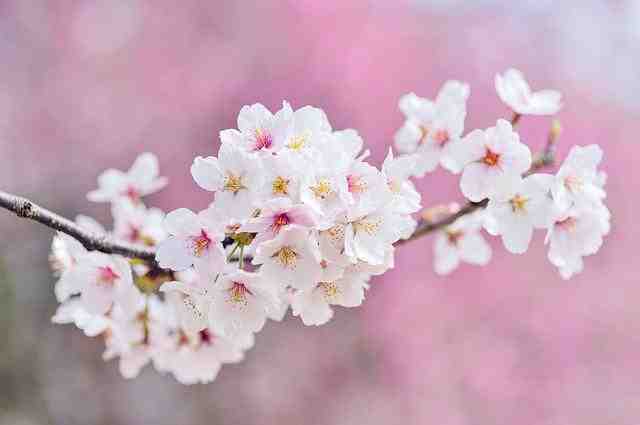
Cherry blossoms, also known as Sakura, hold deep cultural significance in Japan and represent the fleeting beauty of life and the promise of new beginnings. These delicate pink and white flowers adorn cherry trees and mark the arrival of spring.
Interesting Facts:
- Cherry blossoms are a symbol of the transient nature of life in Japanese culture, known as “mono no aware.”
- Hanami is the traditional Japanese practice of appreciating the beauty of cherry blossoms during their brief bloom.
- Cherry blossoms were gifted to the United States by Japan in 1912 as a symbol of friendship.
Mystery Story: In the heart of a mystical forest, there is said to be a hidden grove of cherry trees that bloom with blossoms of otherworldly beauty. Legend has it that those who venture into this grove during the spring equinox will be granted a new beginning, and their deepest desires will be fulfilled. The grove’s location changes with each equinox, making it a well-guarded secret among those who seek renewal.
7. Iris Flower
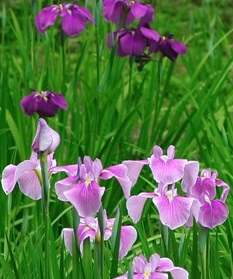
Iris flowers, with their unique and intricate blooms, symbolize hope, courage, and new beginnings. These flowers come in various colors, each carrying its own special meaning.
Interesting Facts:
- Iris flowers are named after the Greek goddess Iris, who was the messenger of the gods and the personification of the rainbow.
- There are over 200 species of Iris, and they can be found on every continent except Antarctica.
- The iris flower has been associated with the French monarchy and is a symbol of France.
Mystery Story: Deep in a remote valley, there is a hidden garden where irises of unimaginable beauty bloom. It is said that a mysterious guardian watches over this garden, and those who are deemed worthy may enter. The iris flowers in this garden are believed to hold the power to grant new beginnings, and many have sought to find this secluded paradise. The identity of the guardian and the location of the garden remain a well-kept secret.
8. Peonies
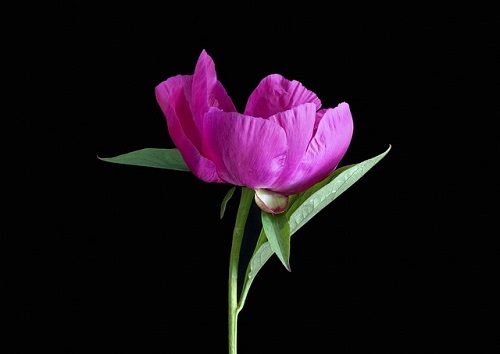
Peonies are known for their lush, abundant blooms and symbolize prosperity, good fortune, and new beginnings. These magnificent flowers are often associated with happiness and love.
Interesting Facts:
- Peonies belong to the Paeonia genus and are native to Asia, Europe, and North America.
- In Chinese culture, peonies are known as the “king of flowers” and are a symbol of wealth and honor.
- There are three main types of peonies: herbaceous, tree, and intersectional.
Mystery Story: In a remote village nestled in the mountains, there is a legend of a hidden peony garden that only reveals itself to those in need of a fresh start. It is said that the fragrance of the peonies in this garden has the power to erase the past and grant a clean slate to anyone who breathes it in. Villagers have whispered stories of miraculous transformations, but the garden’s location remains a closely guarded secret.
9. Sunflowers

Sunflowers, with their bright and sunny disposition, symbolize adoration, loyalty, and the pursuit of happiness. These radiant flowers are also associated with new beginnings and personal growth.
Interesting Facts:
- Sunflowers belong to the Helianthus genus and are native to the Americas.
- The name “sunflower” comes from the flower’s resemblance to the sun.
- Sunflowers are known for their heliotropic nature, meaning they track the movement of the sun throughout the day.
Mystery Story: In a remote field, there is said to be a sunflower that stands taller and more vibrant than any other. Legend has it that anyone who stands before this majestic sunflower during the first light of dawn will be granted a fresh start and the unwavering determination to pursue their dreams. People from all walks of life have embarked on pilgrimages to find this extraordinary sunflower, but it remains elusive, appearing only to those who are ready for a new beginning.
10. Freesia
Freesias are fragrant and delicate flowers that symbolize trust, innocence, and the start of a new chapter. Their sweet scent and elegant appearance make them a popular choice for bouquets and arrangements.
Interesting Facts:
- Freesias belong to the Iridaceae family and are native to South Africa.
- The name “freesia” is derived from the German physician and botanist Friedrich Freese.
- Freesias come in a variety of colors, with white and yellow being the most common.
Mystery Story: In a quaint village, there is a tale of a secret garden where freesias of extraordinary beauty bloom year-round. It is said that those who discover this hidden garden and pick a freesia will be blessed with a fresh start and the courage to embrace change. Countless explorers have ventured into the woods in search of this magical garden, but it remains elusive, appearing only to those who are truly ready to embark on a new journey.
11. Orchids
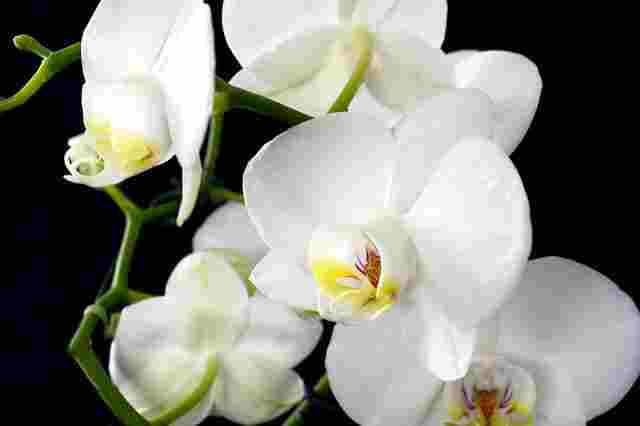
Orchids are exotic and captivating flowers that symbolize love, luxury, and the pursuit of perfection. They are also associated with new beginnings and the resilience required to start anew.
Interesting Facts:
- Orchids are one of the largest flowering plant families, with over 25,000 species and countless hybrids.
- Orchids have been cultivated for thousands of years and were highly prized by the ancient Greeks.
- The Vanilla orchid is the source of natural vanilla flavoring.
Mystery Story: Deep within a dense jungle, there is said to be a hidden orchid that blooms only once every decade. Legend has it that the fragrance of this rare orchid has the power to cleanse the soul and grant a fresh start to anyone who encounters it. Adventurers have embarked on perilous journeys to find this elusive orchid, but its location remains a closely guarded secret, known only to a select few who have experienced its transformative magic.
12. Tulips

Tulips are beloved spring flowers that symbolize love, rebirth, and the arrival of a new season. Their vibrant colors and elegant shape make them a popular choice for gardens and floral arrangements.
Interesting Facts:
- Tulips belong to the Tulipa genus and are native to Central Asia.
- The Dutch tulip craze in the 17th century, known as “Tulipomania,” saw tulip bulbs being traded for exorbitant prices.
- Tulips come in a wide range of colors, each with its own symbolism.
Mystery Story: In a remote valley, there is a legend of a hidden field where tulips of extraordinary beauty bloom in every shade imaginable. It is said that those who stumble upon this enchanting field will be granted a fresh start in life, with their deepest wishes coming true. Adventurers have embarked on quests to find this mystical field, but it is said to appear only to those who are ready to leave the past behind and embrace a new beginning.
13. Camellia
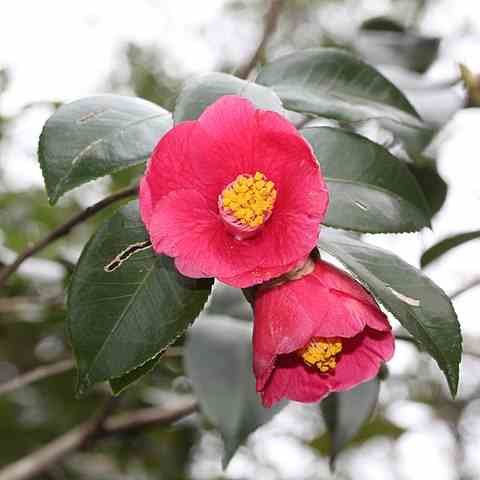
Camellias, with their elegant and glossy blooms, symbolize love, devotion, and the start of a new phase in life. These beautiful flowers have a rich history and cultural significance.
Interesting Facts:
- Camellias belong to the Camellia genus and are native to eastern and southern Asia.
- The tea plant, Camellia sinensis, is a close relative of the ornamental camellia and is used to produce tea leaves.
- Camellias were beloved by the famous American author and gardener, Eudora Welty.
Mystery Story: In a remote corner of the world, there is said to be a hidden garden where camellias of unparalleled beauty bloom year-round. It is believed that anyone who finds this secret garden and plucks a camellia will be granted a fresh start and the wisdom to navigate life’s challenges. Countless explorers have set out in search of this elusive garden, but it remains a well-kept secret, known only to those who are truly ready to embrace a new chapter.
14. Gladiolus
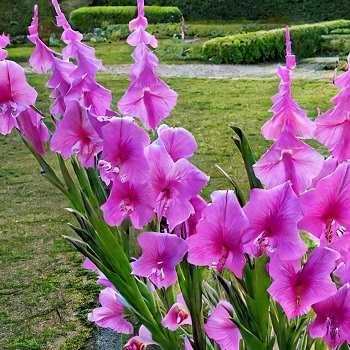
Gladiolus flowers, with their tall spikes of blossoms, symbolize strength, integrity, and the beginning of a new endeavor. These striking flowers are often associated with determination and resilience.
Interesting Facts:
- Gladiolus belong to the Gladiolus genus and are native to South Africa.
- The name “gladiolus” is derived from the Latin word “gladius,” which means “sword,” referring to the plant’s sword-shaped leaves.
- Gladiolus flowers come in a wide range of colors, including red, pink, white, and yellow.
Mystery Story: In a remote mountain range, there is a legend of a hidden gladiolus that blooms only during a rare celestial event. It is said that those who witness this extraordinary bloom will be granted the strength to overcome any obstacle and embark on a new journey with unwavering determination. Adventurers have sought out this elusive gladiolus, but its location remains a closely guarded secret, known only to those who are truly ready to face new challenges.
15. Hyacinth
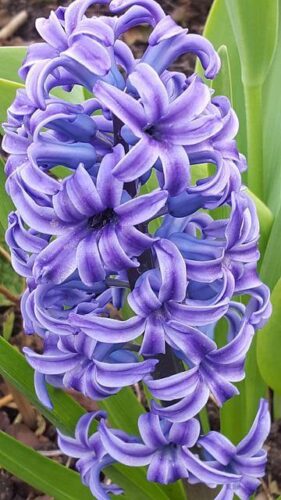
16. Xerophyllum
Xerophyllum, also known as the bear grass or Indian basket grass, symbolizes resilience, adaptability, and the ability to flourish in challenging conditions. These unique plants are often associated with the strength needed for new beginnings.
Interesting Facts:
- Xerophyllum is a genus of flowering plants native to North America.
- It is commonly used by Native American tribes for crafting baskets, hats, and other traditional items.
- The plant’s long, slender leaves are highly sought after for their strength and flexibility.
Mystery Story: In the vast wilderness of North America, there is a legend of a hidden grove of xerophyllum, where these unique plants flourish. It is said that those who stumble upon this remote grove will be granted the strength and adaptability needed to navigate life’s challenges and embark on a new journey. Explorers have ventured into the wilderness in search of this mysterious grove, but its location remains a well-kept secret, known only to those who are truly ready to face adversity and thrive in new beginnings.
17. Lewisia
Lewisia, often referred to as bitterroot or cliff maids, symbolizes endurance, courage, and the ability to overcome obstacles. These hardy wildflowers are known for their tenacity in harsh environments.
Interesting Facts:
- Lewisia is native to western North America and is named after the explorer Meriwether Lewis.
- The bitterroot plant, Lewisia rediviva, was a vital food source for Native American tribes in the region.
- Lewisia flowers come in various colors, including shades of pink, purple, and white.
Mystery Story: In the rugged landscapes of western North America, there is a legend of a hidden valley where Lewisia flowers bloom in abundance. It is said that those who discover this remote valley and witness the resilience of the Lewisia will be granted the courage and endurance needed to overcome life’s challenges and embark on a new path. Many adventurers have set out in search of this mysterious valley, but its location remains a closely guarded secret, known only to those who are truly ready to face adversity with unwavering determination.
18. Zephyranthes
Zephyranthes, commonly known as rain lilies or fairy lilies, symbolize renewal, transformation, and the promise of new beginnings. These petite and delicate flowers often bloom after rainfall, symbolizing the cleansing and refreshing nature of new starts.
Interesting Facts:
- Zephyranthes is a genus of small, bulbous plants native to the Americas.
- They are often called “rain lilies” because they frequently bloom after a heavy rain.
- Zephyranthes flowers come in various colors, including white, pink, and yellow.
Mystery Story: In a hidden glen, there is a legend of a magical field where Zephyranthes blooms appear only after a cleansing rain shower. It is said that those who visit this enchanted field during the rain will be blessed with the power of renewal and the ability to transform their lives. Many seekers have embarked on journeys to find this mystical field, but it is said to reveal itself only to those who are ready to embrace the refreshing embrace of new beginnings.
19. Lavender
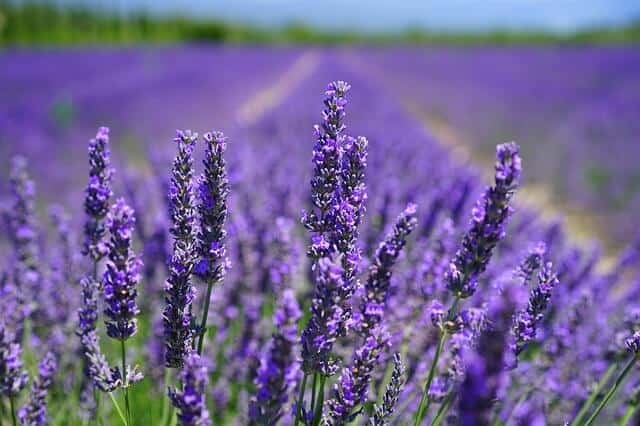
Lavender, with its soothing fragrance and vibrant purple blossoms, symbolizes calmness, tranquility, and the start of a peaceful chapter in life. This aromatic herb is often used for relaxation and healing.
Interesting Facts:
- Lavender belongs to the Lavandula genus and is native to the Mediterranean region.
- Lavender has been used for centuries for its therapeutic properties, including promoting relaxation and reducing stress.
- The essential oil derived from lavender is widely used in aromatherapy and perfumes.
Mystery Story: In a remote valley, there is a legend of a hidden lavender field where the fragrance of the flowers has the power to bring inner peace and tranquility. It is said that those who discover this serene field will be blessed with a fresh start, free from the burdens of anxiety and worry. Many travelers have embarked on quests to find this tranquil field, but its location remains a closely guarded secret, known only to those who are truly ready to embrace a peaceful new beginning.
20. Marigold
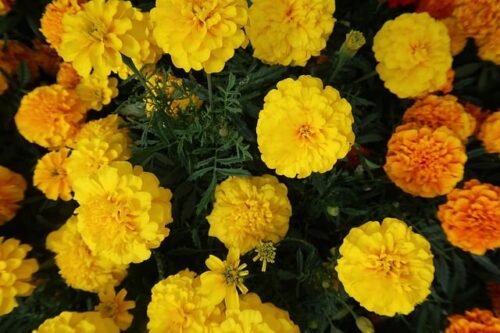
Marigolds, with their bright and cheerful blooms, symbolize optimism, joy, and the promise of a better tomorrow. These vibrant flowers are often associated with celebrations and festivals.
Interesting Facts:
- Marigolds belong to the Tagetes genus and are native to the Americas.
- They are often used in traditional Mexican Dia de los Muertos (Day of the Dead) celebrations to honor deceased loved ones.
- Marigolds are known for their pest-repelling properties and are commonly planted in vegetable gardens.
Mystery Story: In a hidden meadow, there is a legend of a magical marigold garden where the blossoms radiate with boundless joy and hope. It is said that those who discover this enchanting garden will be blessed with a fresh start filled with optimism and the promise of better days ahead. Adventurers have set out in search of this mystical meadow, but it is said to reveal itself only to those who are truly ready to embrace the joy of new beginnings.

In conclusion, the sector of plants is wealthy with symbolism and that means, and the plant life that constitute new beginnings bring with them stories of hope, transformation, and the promise of clean starts. Whether you come across those plant life in gardens, meadows, or hidden groves, they serve as reminders that life is full of possibilities for renewal and the pursuit of happiness. Each bloom, with its particular beauty and symbolism, invitations us to include the magic of latest beginnings and embark on our own journeys of transformation.
Quiz: Flowers That Symbolize New Beginnings
- What flower is often associated with the arrival of spring and symbolizes new beginnings?
- A) Rose
- B) Sunflower
- C) Daffodil
- D) Tulip
- Which flower is known for its purity and is often chosen for weddings as a symbol of new beginnings?
- A) Calla Lily
- B) Iris
- C) Peony
- D) Marigold
- In Japanese culture, which flower represents the promise of new beginnings and the transient nature of life?
- A) Cherry Blossom
- B) Lavender
- C) Lotus
- D) Gladiolus
- What flower is associated with the concept of “mono no aware” in Japan, signifying the beauty of impermanence?
- A) Camellia
- B) Zephyranthes
- C) Lewisia
- D) Orchid
- Which flower, often used to convey sincerity and heartfelt emotions, symbolizes the joy of new beginnings?
- A) Hyacinth
- B) Daisies
- C) Freesia
- D) Xerophyllum
- What flower is named after the Greek goddess of the rainbow and is associated with hope and courage?
- A) Lotus
- B) Sunflower
- C) Iris
- D) Gladiolus
- In Greek mythology, which flower is believed to have sprung from the blood of the youth Hyacinthus and symbolizes playfulness and sport?
- A) Hyacinth
- B) Daffodil
- C) Rose
- D) Calla Lily
- Which flower is often called “rain lily” because it frequently blooms after a heavy rain, symbolizing renewal and transformation?
- A) Lavender
- B) Marigold
- C) Zephyranthes
- D) Gladiolus
- What flower, known for its fragrant and soothing properties, symbolizes calmness and the start of a peaceful chapter in life?
- A) Marigold
- B) Lavender
- C) Peony
- D) Camellia
- In Chinese culture, which flower is known as the “king of flowers” and is a symbol of wealth and honor?
- A) Daffodil
- B) Peony
- C) Calla Lily
- D) Tulip
Answers:
- C) Daffodil
- A) Calla Lily
- A) Cherry Blossom
- A) Camellia
- A) Hyacinth
- C) Iris
- A) Hyacinth
- C) Zephyranthes
- B) Lavender
- B) Peony
How did you do? Count up your correct answers and see how well you know the flowers that symbolize new beginnings!

